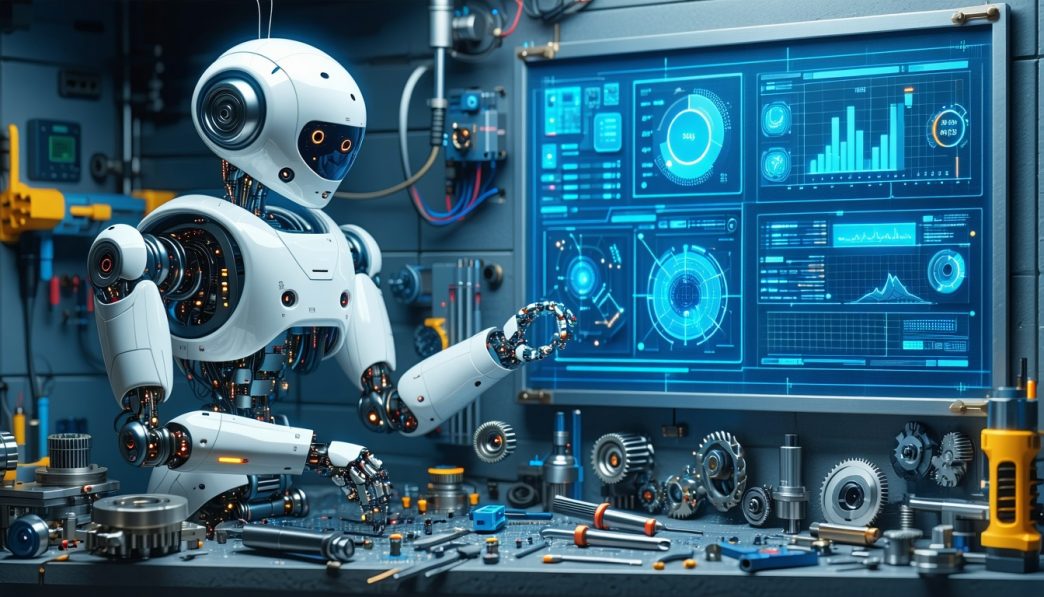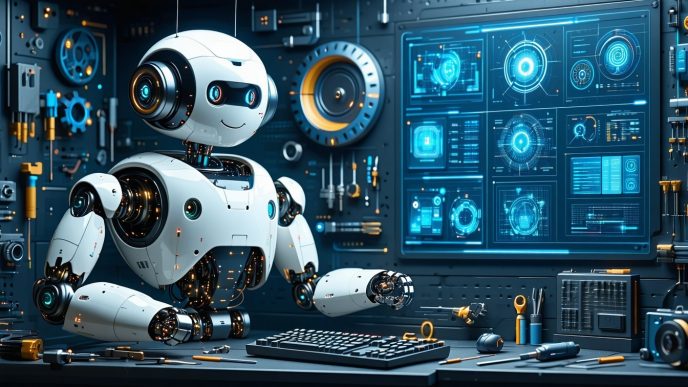Importance of Robot Repair Services
Investing in a robot often comes with expectations for long-term performance and reliability. Understanding the importance of robot repair services ensures that owners can enjoy seamless functionality.
The Significance of After-Sales Support
After-sales support plays a vital role in the overall customer experience. When a robot requires maintenance or repair, having access to comprehensive support can provide peace of mind. Many consumers appreciate knowing that help is readily available should an issue arise.
After-sales support encompasses several key elements, including:
- Technical Assistance: Quick access to troubleshooting and advice to resolve minor issues.
- Repair Services: The ability to send robots for professional repairs when necessary.
- Customer Communication: Regular updates on repair status and expected turnaround times.
| After-Sales Support Element | Importance |
|---|---|
| Technical Assistance | Helps diagnose and resolve minor issues quickly. |
| Repair Services | Essential for restoring functionality of malfunctioning robots. |
| Customer Communication | Keeps customers informed and reduces anxiety during repairs. |
Understanding Robot Warranties
Robot warranties are fundamental to protecting consumer investments. A warranty outlines the terms of coverage and specifies what repairs or replacements are eligible under the agreement. Familiarity with the different types of warranty coverage can help owners make informed decisions.
Types of Warranties
- Standard Warranties: Typically cover defects in materials and workmanship for a limited time.
- Extended Warranties: Offer coverage beyond the standard period for additional protection, often at an extra cost.
| Warranty Type | Coverage Duration | Key Features |
|---|---|---|
| Standard Warranty | Usually 1-2 years | Covers manufacturing defects and basic repairs. |
| Extended Warranty | 2 years or more | Enhanced coverage options, including repairs after the standard period. |
Understanding the exclusions in warranties is equally important. Common warranty pitfalls include:
- Coverage limitations on certain types of damage.
- Requirements for regular maintenance to keep the warranty active.
- Restrictions on repairs conducted by unauthorized service providers.
For details on warranty options, explore our article on robot warranties and support. Ensuring awareness of warranty policies will enable owners not only to take advantage of the robot repair services but also to navigate potential challenges effectively.
Common Repair Scenarios
Understanding common issues that may require robot repair services can help owners anticipate potential problems and facilitate a smoother repair process.
Typical Issues Requiring Repair
Several typical challenges can arise with robotic devices, impacting their functionality. Some of the most frequent repair scenarios include:
| Issue | Description |
|---|---|
| Battery Malfunction | Problems with charging or battery life can significantly affect a robot’s performance. |
| Sensor Failure | Malfunctioning sensors may lead to navigation issues and errors in operation. |
| Motor Problems | Wear and tear on motors can result in decreased efficiency or complete failure. |
| Software Glitches | Software updates or bugs may hinder robot performance, necessitating troubleshooting and repair. |
| Structural Damage | Physical issues, such as cracks or breaks in the robot’s casing, often require repair. |
These scenarios reflect some of the common repairs that technicians encounter.
Factors Influencing Repair Needs
Several factors may influence the necessity for repairs and the specific issues that arise:
| Factor | Explanation |
|---|---|
| Usage Frequency | Robots used more frequently may experience wear and tear at a faster pace. |
| Environment | Harsh conditions, such as dust or humidity, can accelerate potential issues. |
| Maintenance Practices | Regular maintenance can help reduce the likelihood of encountering more significant problems. Owners who utilize robot maintenance service plans tend to experience fewer repairs. |
| Age of the Robot | Older models may have a higher incidence of failure as components age and technology advances. |
| Quality of Initial Purchase | Higher-quality robots are often more reliable and less prone to failure. Exploring best brands for robot warranty and support can provide insights into reliable options. |
Being aware of these issues and influencing factors can guide robot owners in proactive maintenance, improving their overall experience with robot repair services and turnaround times. For more information, consider looking into standard warranty coverage for robots and how they impact repair scenarios.
Robot Repair Process
The process of repairing a robot typically involves several key steps to ensure that the malfunction is accurately diagnosed and effectively resolved. Understanding these steps can provide peace of mind for tech buyers when it comes to robot repair services and turnaround times.
Initial Assessment and Diagnosis
When a robot malfunctions, the first step in the repair process is the initial assessment and diagnosis. This stage requires skilled technicians to examine the robot to identify the nature of the problem. Common diagnostic techniques may include:
- Running diagnostic software
- Visual inspections
- Testing individual components
The accuracy of the diagnosis directly affects the repair timeline and determines which parts may need replacement. In some cases, the technician may need to contact the manufacturer for detailed specifications or troubleshooting support. For expert guidance on what to expect during this phase, see our article on robot warranties and support.
Repair Timeline and Turnaround
The repair timeline can vary based on several factors, including the complexity of the issue and the availability of necessary parts. On average, the estimated turnaround for repairs may fall within the following ranges:
| Repair Type | Estimated Timeframe |
|---|---|
| Simple Fixes | 1-2 days |
| Moderate Repairs | 3-5 days |
| Complex Repairs | 1-2 weeks |
| Parts Replacement | Varies by sourcing |
The technician will communicate the expected turnaround time based on their assessment of the issue. It is essential to stay in communication with customer service for updates, as delays can occur if parts are out of stock or if additional issues are uncovered during the repair process. For further assistance, explore our resource on customer support for robotics brands.
By understanding the robot repair process, buyers can be better prepared for what lies ahead when their device requires servicing. This knowledge allows for more informed decisions regarding warranty options and maintenance strategies. Those seeking to maximize their product’s lifespan may also consider reviewing robot maintenance service plans for ongoing support.
Customer Service Experience
In the realm of robot repair services and turnaround times, customer service plays a vital role. It ensures that consumers feel informed, supported, and valued throughout the repair process. Key aspects of customer service include effective communication and various support channels.
Communication and Updates
Clear communication is essential when dealing with robot repair services. Customers should expect frequent updates regarding the status of their repairs. This includes information on estimated timelines, parts availability, and any changes to the initial repair assessment. Effective communication can alleviate customer anxiety and enhance satisfaction with the service received.
The table below outlines typical communication points customers may encounter during the repair process:
| Communication Point | Frequency |
|---|---|
| Initial Repair Assessment | Within 24 hours |
| Repair Progress Updates | Weekly or bi-weekly |
| Completion Notification | Upon repair completion |
| Follow-Up After Service | 1-2 weeks post-repair |
Staying informed leads to a better understanding of the repair process and can facilitate smoother interactions with service providers.
Support Channels for Repairs
Robotics companies should offer multiple support channels to cater to varying customer preferences. These channels can include:
- Phone Support: Direct contact with customer service representatives for immediate assistance.
- Email Support: Ideal for non-urgent inquiries, allowing customers to provide detailed information about their repair needs.
- Live Chat: Instant messaging features on websites that enable real-time assistance.
- Online Portals: Customer accounts where repair status, warranty details, and service history can be accessed.
Customers can choose the method most convenient for them. It’s advisable to review the available support options detailed in the article on customer support for robotics brands.
By understanding the communication and support channels available, consumers can enhance their overall experience when navigating robot repair services and turnaround times. This insight into customer service can help inform their purchasing decisions regarding warranties and support. For more information on what to expect, refer to our articles on robot warranties and support and common warranty pitfalls to avoid.
Factors Affecting Repair Duration
When navigating the landscape of robot repair services and turnaround times, various factors can influence how long the repair process takes. Understanding these elements can provide valuable insight for smart shoppers and homeowners.
Complexity of the Issue
The nature and complexity of the problem play a significant role in determining the repair duration. Simple issues such as software glitches may be resolved quickly, while hardware failures often require more extensive troubleshooting and repair.
| Complexity Level | Description | Estimated Repair Time |
|---|---|---|
| Low | Software updates or minor adjustments | 1-2 days |
| Medium | Replacement of small components (e.g., sensors) | 3-5 days |
| High | Major repairs or replacement of critical hardware (e.g., motors) | 1-2 weeks |
A more complex problem typically means additional diagnostics, thus increasing the time required for repairs. Customers are encouraged to inquire about the initial assessment to gain clarity on potential repair timelines.
Availability of Parts
Another crucial factor influencing repair duration is the availability of replacement parts. If parts are readily available, repairs can be conducted swiftly. However, delays may occur if specific components must be ordered from a manufacturer or supplier.
| Availability Status | Description | Estimated Impact on Repair Time |
|---|---|---|
| In Stock | Parts are available on-site | Minimal delay |
| Backordered | Parts must be ordered and shipped | 1-2 weeks |
| Discontinued | Parts are out of production | Potentially longer delays or alternative solutions |
Homeowners should familiarize themselves with their robot’s warranty and support details to understand the options available regarding parts. Having a knowledge of robot warranties and support can also help them navigate potential delays and ensure they have a plan for quick resolutions. To ensure quicker repairs, it’s advisable to check for robot maintenance service plans that include readily available parts.
Maximizing Robot Repair Efficiency
To ensure peace of mind when investing in robotic technology, understanding how to maximize repair efficiency is essential. Proper maintenance and warranty utilization play critical roles in minimizing downtime and ensuring optimal performance.
Proper Maintenance Practices
Routine maintenance is vital for the longevity and efficiency of robots. Adhering to regular upkeep not only prevents unexpected breakdowns but can also significantly reduce the repair frequency. Here are some recommended maintenance practices:
| Maintenance Task | Frequency |
|---|---|
| Cleaning Sensors and Parts | Weekly |
| Checking Battery Health | Monthly |
| Updating Software | Every 3 Months |
| Inspecting Mechanical Components | Bi-Annually |
Implementing these practices helps in identifying minor issues before they develop into major problems. Additionally, using a formal robot maintenance service plan can provide structured guidelines for upkeep, further enhancing reliability.
Utilizing Warranty Coverage
Understanding warranty options can help smart shoppers make informed decisions regarding their robots. Warranties often cover repairs and offer peace of mind in case of defects. There are different types of coverage available:
| Warranty Type | Coverage Provided | Duration |
|---|---|---|
| Standard Warranty | Repairs for manufacturing defects | 1 Year |
| Extended Warranty | Additional coverage for wear and tear | Up to 3 Years |
| Replacement Policy | Full replacement for non-repairable units | As specified in terms |
Utilizing standard warranty coverage for robots ensures that any repair costs related to manufacturing defects are not a financial burden. Exploring extended warranties for robots can extend protection beyond the initial term, while understanding robot replacement policies provides clarity on options should a robot be deemed irreparable.
Taking advantage of warranties can greatly influence the efficiency of robot repair services and turnaround times. Effective communication with customer support for robotics brands can streamline the repair process, ensuring that concerns are addressed promptly.
In conclusion, diligent maintenance practices coupled with proper utilization of warranty coverage can significantly enhance the efficiency of robot repairs, ultimately leading to a better user experience.















